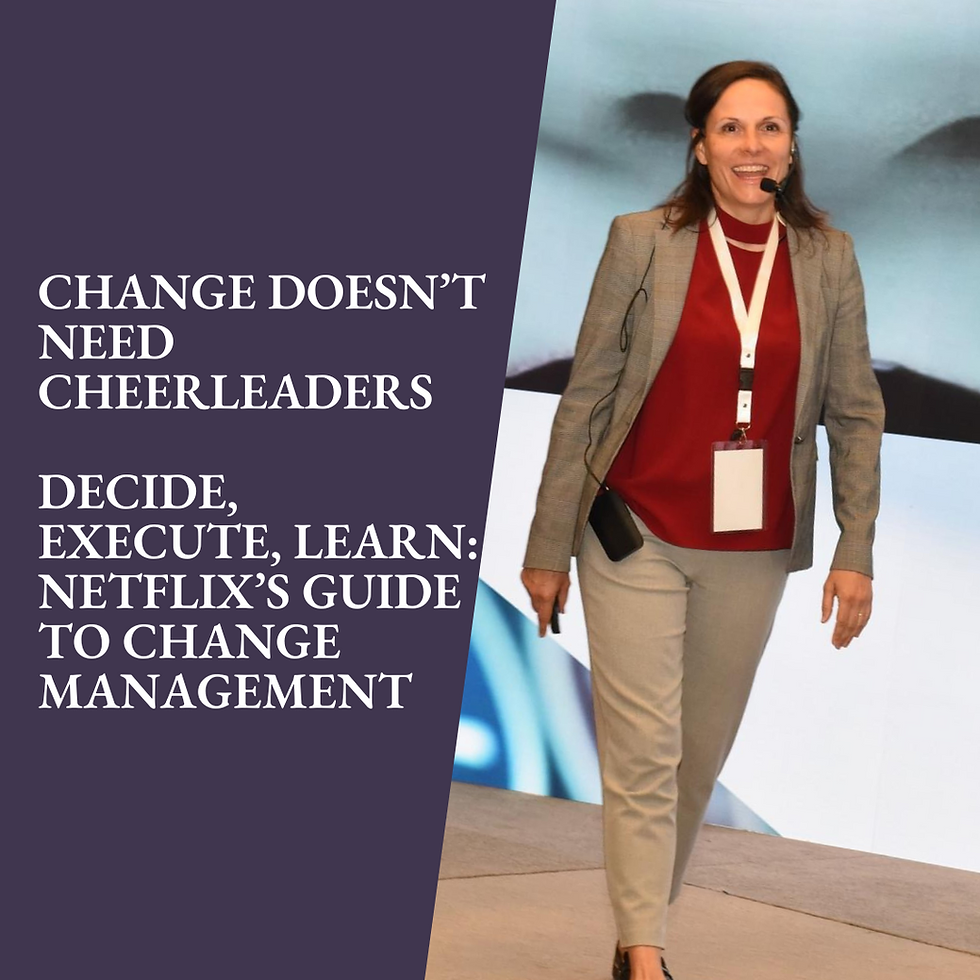Applying the desire lines/path principle to build better employee experience.
- Szilvia Olah

- Jan 1, 2023
- 4 min read
Once upon a time, there was a genius architect. After completing a new building, he decided to leave the courtyard and other grassy areas around the building without sidewalks. The idea was to let people use the building for a year and let their use form trails in the grass. Then lay the sidewalks on top of those paths.
The true power of desire paths was revealed when Disneyland was opened. There weren’t any paved or fenced areas as Walt Disney gave visitors the freedom to walk wherever they pleased, and once desire paths revealed themselves, he had them paved.
This story provides a great way to learn about people's behaviour, experiences, and needs. So I thought, why don't we use this principle in relation to employee experience to learn about their needs that are often not verbally expressed but acted out?
The desire line or desire path principle (as they call it) is often used for testing user experience and adjusting products or services accordingly. Unfortunately, it is a type of communication that is hardly ever looked into by Human Resources and Organizational Psychologists, even though it is the surest way to know what people want and need and what type of policies and processes make no sense. Observing natural behaviour is a much more accurate indicator of people's needs than talking to them and trying to figure out their needs from interviews or employee surveys. People are often not good at articulating what they want or need but almost always show you in their actions, but you need to learn to pay attention to them.

So what does it look like at work? Here are some of the examples that you can look out for:
- People constantly breach one of your policies. Don't try to reinforce it but stop and learn about the reason. I always say if a rule or, in this case, a policy is often broken, it is a stupid rule, and people have figured it out.
- People don't follow the instruction to get a task done and have found a new, more efficient way of doing it. See the picture.
- People are unhappy with certain rules, policies or processes. The perfect example of this is the mass resignations due to the lack of desired working conditions like the possibility of flexible working. The resignation or the abandonment of the service (the job) is a response to the absence of the desired path (whatever that may be). Instead of treating it as user experience feedback, we blame the user for not using the system as the designer (HR or the organization) intended it to be used, in this case, working full-time with no flexible work option. But this could also be about poor leadership. I have witnessed on numerous occasions that leaders react to their team's (user) feedback about their behaviour or management style with a "This is me, this is how I lead." The desired path there is a different way of leadership style, but once again, user experience is dismissed, which will be remedied by the abandonment of services.
- People don't use certain benefits. Instead of saying, "We have it if they want it." ask yourself why your people aren't using your offering. Is it too complicated to use? Maybe doesn't worth the hassle or it is not really needed?
The list is endless, starting from the food provided in the cafeteria, benefits, leadership, and working conditions, all the way to contacting staff outside of working hours. I just had a staff talking about her managers sending emails at 4 am and how much it bothers her. Is it a conflict? Is it a poor leadership style? Maybe not. It is user experience feedback that is ignored by the service provider (manager). Stop sending 4 am emails, as your user doesn't appreciate it.
The problem with not paying attention to the desired line/path is that we create policies, processes, benefits packages, and general working conditions that aren't designed for the users. They are designed for the designer. Avoid becoming the designer who thinks that he knows what people need. It is likely that you have no clue. Instead, become a designer who understands people’s needs, and you can start that by observing their behaviour. Subsequently, design their experiences based on your collected information by monitoring their desire lines. Unfortunately, desired lines will not tell you why people behave in a certain way, so you will have to investigate that to better understand it.
So, don't just rely on surveys, conversations, or on verbal complaints from your staff to find out what you need. Be the person or the designer who puts in the effort and the time to observe and monitor their desired lines and adjust your services to their needs.
Next time when you decide to take a shortcut and cross the grass, breach a policy or not follow instructions for a task, think of this principle. Also, apply this principle to leadership because when people leave you, it really means that their desired lines and the services you provide them are in misalignment.
.png)



Comments